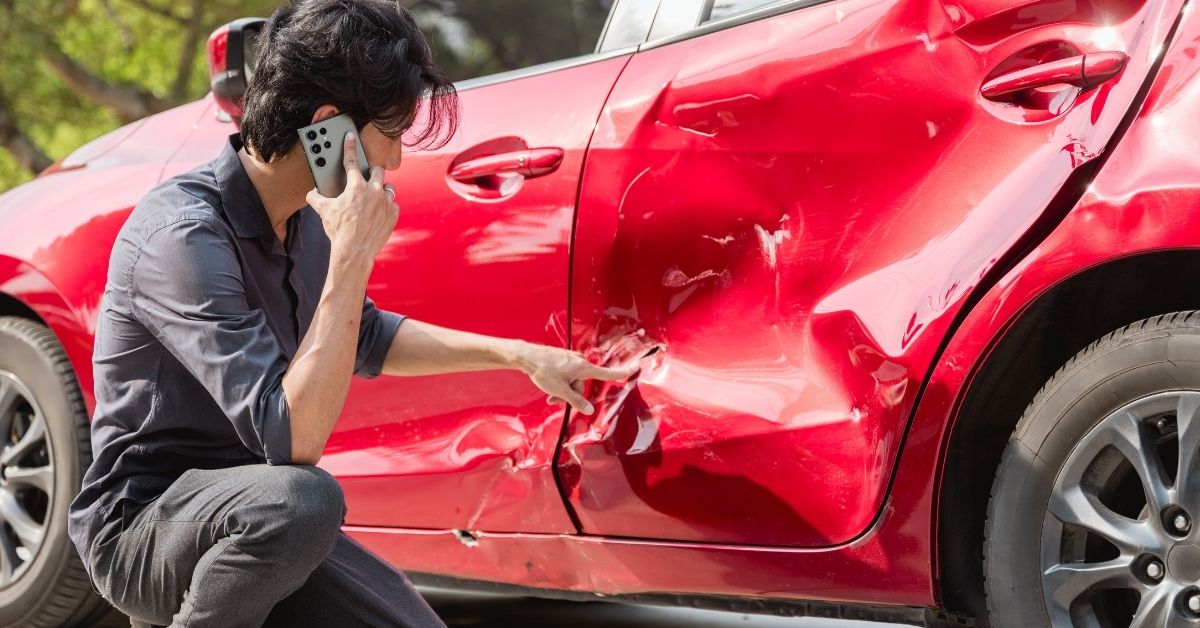Can I Still Seek Compensation If I Was Partially at Fault for the Accident?

Accidents happen, and when they do, assigning blame isn’t always clear-cut. In many cases, multiple parties are partially at fault. If you find yourself in this situation, you might wonder whether you can still seek compensation for your injuries or damages, even if you were partially at fault for the accident. The answer isn’t a simple yes or no. It depends on various factors, including the laws in your jurisdiction, the extent of your fault, and the specific circumstances of the incident. Let’s dig deeper into this complex legal issue.
Understanding Comparative Fault
To grasp your rights in situations where you bear some responsibility for an accident, it’s essential to understand the legal concept of comparative fault. Most states in the United States follow some form of comparative fault principle. This rule allows accident victims to recover damages even if they were partially at fault for the incident. However, the amount of compensation they receive may be reduced based on their degree of fault.
Types of Comparative Fault
There are two main types of comparative fault systems: pure comparative fault and modified comparative fault.
Pure Comparative Fault
Under a pure comparative fault system, the focus is on fairness. Primarily allocating damages based on each party’s degree of fault. In this system, accident victims can seek compensation regardless of how much they contributed to the accident. Even if someone is deemed 99% responsible for the accident, they can still recover damages. Although the amount awarded will be reduced by their percentage of fault. For instance, consider a scenario where a person is found to be 30% at fault for a car accident resulting in $10,000 in damages. In this case, they would be entitled to receive $7,000 ($10,000 minus 30%). Thus, reflecting their degree of responsibility for the incident.
Modified Comparative Fault
States that adopt a modified comparative fault approach introduce certain limitations on an individual’s ability to recover damages based on their level of fault.
50% Bar Rule
Under this rule, accident victims cannot recover damages if they are found to be equally or more at fault than the other party. However, if their fault is less than 50%, they can seek compensation, with their award reduced by their percentage of fault. This rule aims to prevent individuals who are predominantly responsible for an accident from obtaining compensation, while still allowing those with less responsibility to recover damages proportionate to their fault.
51% Bar Rule
In states implementing the 51% bar rule, individuals cannot recover damages if they are deemed 51% or more partially at fault for the accident. However, if their fault falls within 50% or less, they retain the option to pursue compensation. Albeit with a proportional reduction in their award. Although this rule establishes a stricter criterion for plaintiffs seeking damages compared to the 50% bar rule. But, it still permits those with less than 50% fault to seek recompense for their injuries or losses.
Here’s a chart detailing states that follow the 51% Bar Rule and the 50% Bar Rule:
| 51% Bar Rule States | 50% Bar Rule States |
| Alabama | Alaska |
| Arkansas | Arizona |
| District of Columbia | California |
| Georgia | Colorado |
| Kansas | Connecticut |
| Maryland | Delaware |
| North Carolina | Florida |
| South Carolina | Hawaii |
| Tennessee | Idaho |
| Utah | Illinois |
| Virginia | Indiana |
| West Virginia | Iowa |
| Louisiana | |
| Maine | |
| Massachusetts | |
| Michigan | |
| Minnesota | |
| Mississippi | |
| Missouri | |
| Montana | |
| Nebraska | |
| Nevada | |
| New Hampshire | |
| New Jersey | |
| New Mexico | |
| New York | |
| North Dakota | |
| Ohio | |
| Oklahoma | |
| Oregon | |
| Pennsylvania | |
| Rhode Island | |
| South Dakota | |
| Texas | |
| Vermont | |
| Washington | |
| Wisconsin | |
| Wyoming |
Overall, both pure and modified comparative fault systems aim to distribute damages fairly among parties involved in an accident. But, the specific rules and thresholds vary depending on the state’s laws and regulations.
Seeking Compensation After Being Partially at Fault
Seeking compensation after being partially at fault for an accident can be a daunting task. Particularly if you’re unfamiliar with the legal intricacies involved. However, it’s essential to recognize that in jurisdictions that permit comparative fault, you still have the right to pursue compensation for your injuries and losses. While the prospect may seem daunting, enlisting the expertise of a seasoned personal injury attorney can provide invaluable guidance. They will help support throughout the process. These legal professionals possess the knowledge and experience to navigate the complexities of comparative fault laws. Thus, ensuring that your rights are protected and that you receive fair compensation for your damages.
Consulting With a Personal Injury Attorney
Seek a qualified attorney when seeking compensation after an accident where you’re partially at fault. Personal injury attorneys specialize in assessing the nuances of cases like yours. By evaluating the extent of your fault, and determining the most effective strategy for pursuing compensation. By seeking our help early on, you can gain a clear understanding of your legal options and make informed decisions about how to proceed.
Gathering Evidence
Gathering evidence is a critical step in building a strong compensation case. Your attorney will require comprehensive documentation to support your claim of being partially at fault. This includes police reports, witness statements, and medical records detailing your injuries. Additionally, photographs of the accident scene and any visible damages. This evidence supports your account and offers vital insight into the extent and impact of your injuries.
Dealing with Insurance Companies When Partially at Fault
Negotiating with insurance companies can be challenging. Especially when they attempt to downplay your claim or shift full blame onto you rather than being partially at fault. Having an attorney by your side can level the playing field. We have the negotiation skills and legal insight necessary to advocate effectively on your behalf. By entrusting negotiations to your attorney, you ensure that your rights are protected. Not to mention, that you receive the maximum compensation to which you’re entitled.
If the opposing party or their insurance company presents a settlement offer, it’s essential to approach the decision with caution. Although a swift resolution may tempt you, carefully assess the offer’s terms with your attorney to ensure fair compensation. Your attorney can assess the offer in light of the full extent of your losses, including medical expenses, lost wages, and pain and suffering, and guide whether to accept, reject, or negotiate for a more favorable outcome.
Understanding Contributory Negligence in Regards to Being Partially at Fault
Contributory negligence represents a legal doctrine that holds significant implications for individuals seeking compensation in certain jurisdictions. Unlike comparative fault systems, which apportion damages based on each party’s degree of fault, contributory negligence jurisdictions adopt a more stringent approach. In these jurisdictions, plaintiffs may be barred from recovering any compensation if they are found to bear even a minimal degree of fault for the accident. This means that regardless of the other party’s level of responsibility, any contributory negligence on the part of the plaintiff can serve as a complete bar to recovery. Understanding this distinction is crucial for individuals navigating the legal landscape after an accident, as it underscores the importance of diligent legal representation and strategic advocacy.
Discussing the differences between contributory negligence and comparative fault systems sheds light on the varying levels of leniency offered to plaintiffs in different jurisdictions. While contributory negligence rules can be unforgiving, comparative fault systems, including pure and modified versions, provide more flexibility.
Comparative Fault Jurisdictions
In comparative fault jurisdictions, plaintiffs may still seek compensation even if they bear some degree of fault for the accident. Under these systems, damages are typically reduced in proportion to the plaintiff’s level of responsibility, allowing for a more equitable distribution of liability. By examining these contrasting approaches, individuals gain insight into the potential challenges and opportunities they may encounter when pursuing compensation for their injuries and losses.
The Role of Jury Decisions and Case Precedents in Comparative Fault and Partially at Fault Cases
In comparative fault cases, the decisions reached by juries and the precedents established by previous cases wield significant influence over the outcome of a claim. Juries are tasked with assessing the evidence presented during trial. Including each party’s degree of fault. Additionally, determining the appropriate amount of compensation to be awarded. Their deliberations are guided by legal principles and instructions provided by the presiding judge. To reach a fair and just verdict that reflects the realities of the case. Consequently, jury makeup, argument strength, and evidence affect the final outcome.
Put Your Rights in Expert Hands: Seek Compensation with B|B Law Group
In the pursuit of justice after an accident where you may bear partial responsibility, remember that you’re not alone in navigating the legal intricacies. Navigating comparative fault laws with legal guidance can secure the compensation you deserve after an accident. At B|B Law Group offer personalized, effective legal representation in Los Angeles, tailored to your unique circumstances by experienced attorneys. We understand the challenges you face and are dedicated to advocating for your rights every step of the way. Don’t let partial fault deter you from seeking the justice and compensation you’re entitled to. Contact B|B Law Group today to schedule a consultation and take the first step towards a brighter future.


